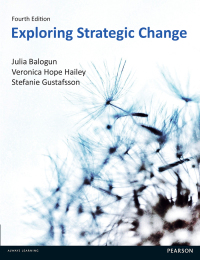Question
Problem 1 A stock has had returns of 19 percent, 15 percent, -2 percent, 13 percent, and 5 percent over the last 5 years. What
Problem 1 A stock has had returns of 19 percent, 15 percent, -2 percent, 13 percent, and 5 percent over the last 5 years. What are the arithmetic and geometric returns for the stock?
Problem 2 Assume there is a tax-free bond that is yielding 9% and a taxable bond that is yielding 12% . In what bond should the investors in the following tax brackets invest: 10%, 15%, 30%, 40%
Problem 3 You are bullish on LKC stock. The current market price is $50 per share, and you have $5,000 of your own to invest. You borrow an additional $5,000 from your broker at an interest rate of 8% per year and invest $10,000 in the stock. a. What will be your rate of return if the price of LKC stock goes up by 10% during the next year? The stock currently pays no dividends. b. How far does the price of LKC stock have to fall for you to get a margin call if the maintenance margin is 30%? Assume the price fall happens immediately.
Problem 4 The composition of the Farhat Group Fund portfolio is as follows: Stock Number of Shares Price A 100,000 $30 B 200,000 $45 C 400,000 $25 D 500,000 $35 The fund has not borrowed any funds, but its accrued management fee with the portfolio manager currently totals $40,000. There are 3 million shares outstanding. What is the net asset value of the fund?
Problem 5 You manage a risky portfolio with an expected rate of return of 18% and a standard deviation of 28%. The T-bill rate is 8%. 13. Your client chooses to invest 70% of a portfolio in your fund and 30% in an essentially risk-free money market fund. a) What is the expected value and standard deviation of the rate of return on his portfolio? b) 15. What is the reward-to-volatility (Sharpe) ratio (S) of your risky portfolio? Your clients? c) Your clients degree of risk aversion is A = 3.5. What proportion, y, of the total investment should be invested in your fund? What is the expected value and standard deviation of the rate of return on your clients optimized portfolio?
Problem 6 A pension fund manager is considering three mutual funds. The first is a stock fund, the second is a long-term government and corporate bond fund, and the third is a T-bill money market fund that yields a rate of 8%. The probability distribution of the risky funds is as follows: Expected Return Standard Deviation Stock fund (S) 18% 25% Bond fund (B) 15 14 The correlation between the fund returns is .10. What are the investment proportions in the minimum-variance portfolio of the two risky funds, and what is the expected value and standard deviation of its rate of return?
problem 7 A stock recently has been estimated to have a beta of 1.3: a. What will a beta book compute as the adjusted beta of this stock? b. Suppose that you estimate the following regression describing the evolution of beta over time: t = .3 + .7t1 What would be your predicted beta for next year?
Problem 8 Assume that the risk-free rate of interest is 6% and the expected rate of return on the market is 16%. A share of stock sells for $50 today. It will pay a dividend of $6 per share at the end of the year. Its beta is 1.2. What do investors expect the stock to sell for at the end of the year? NB: Stock Total return: 1+10 0
Step by Step Solution
There are 3 Steps involved in it
Step: 1

Get Instant Access to Expert-Tailored Solutions
See step-by-step solutions with expert insights and AI powered tools for academic success
Step: 2

Step: 3

Ace Your Homework with AI
Get the answers you need in no time with our AI-driven, step-by-step assistance
Get Started


